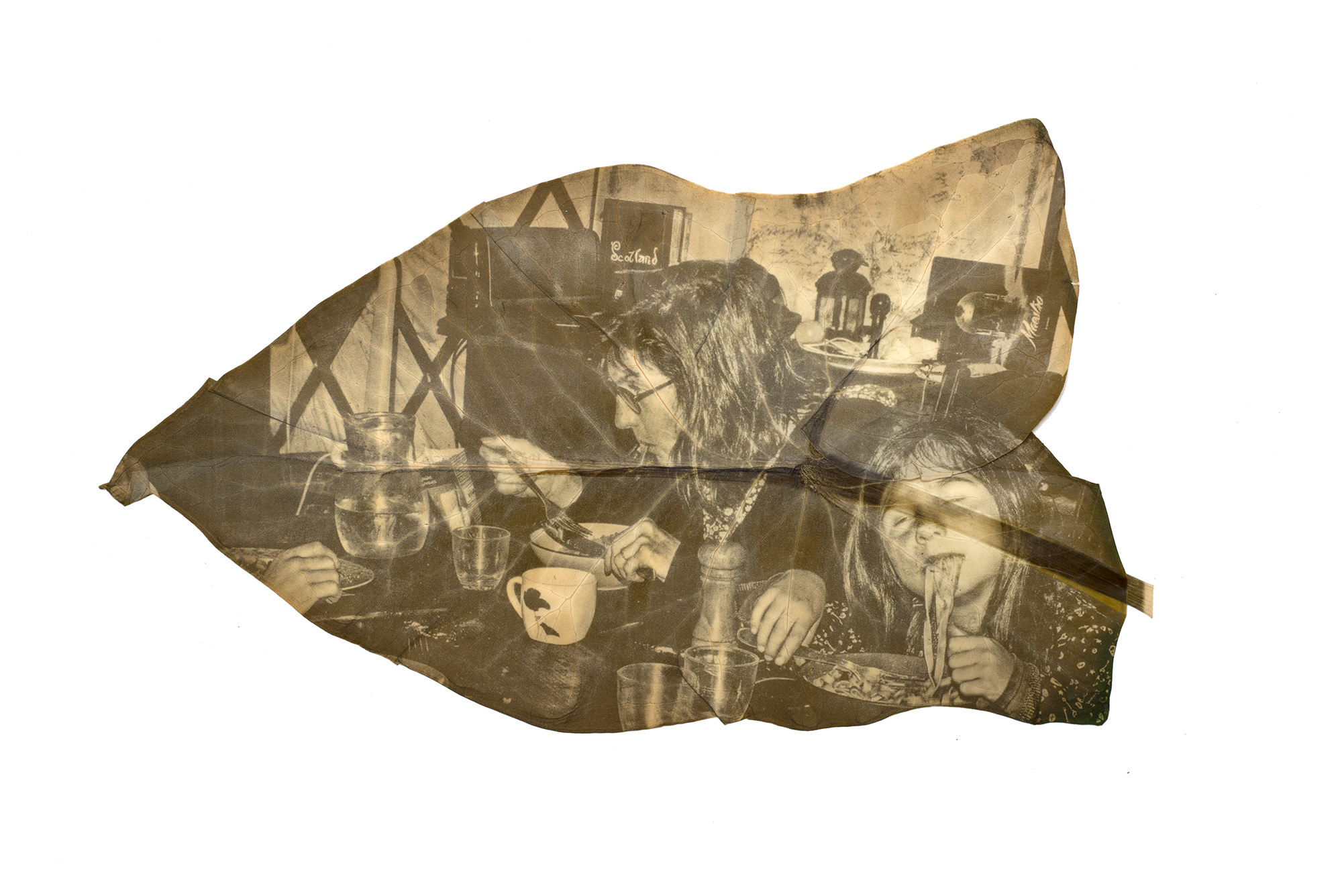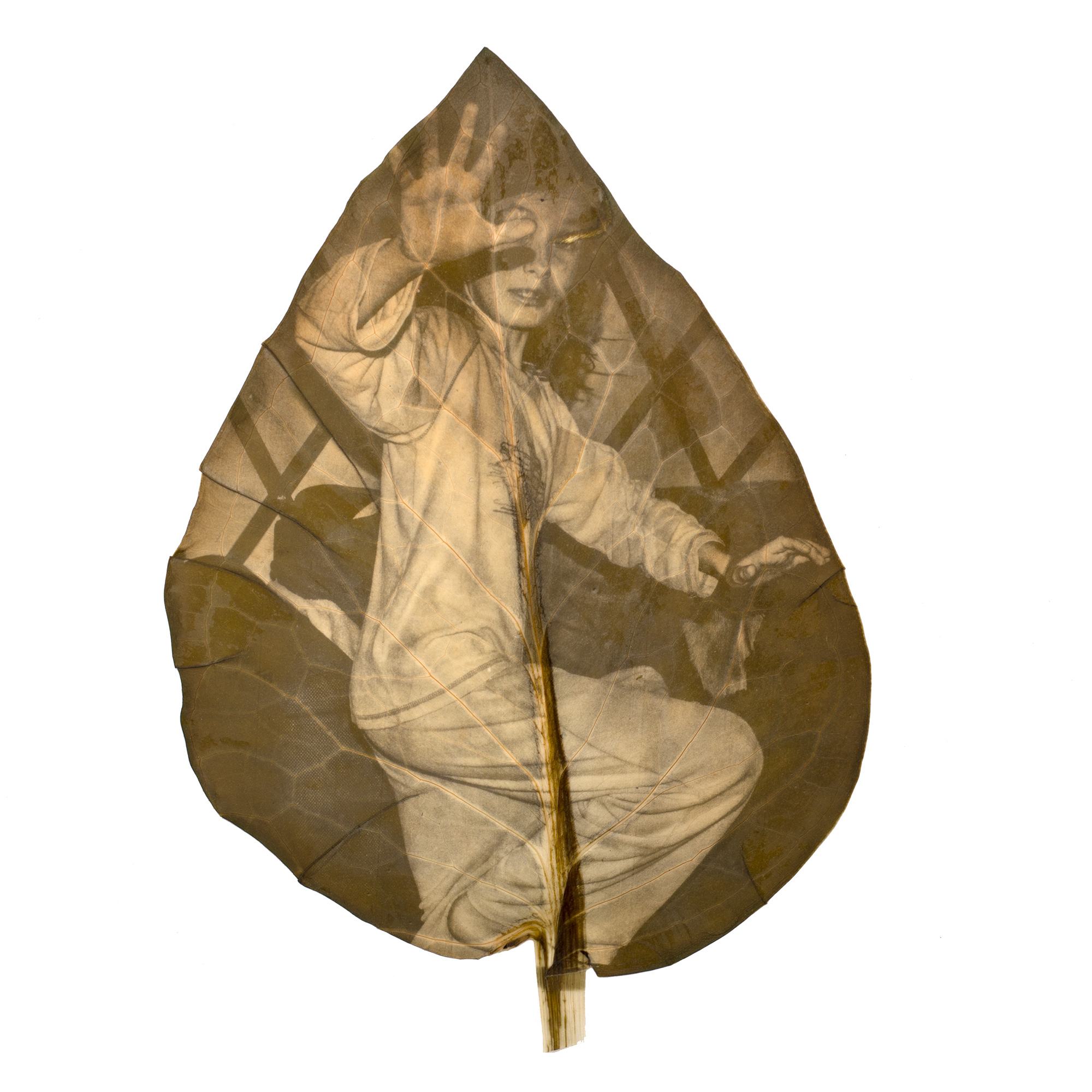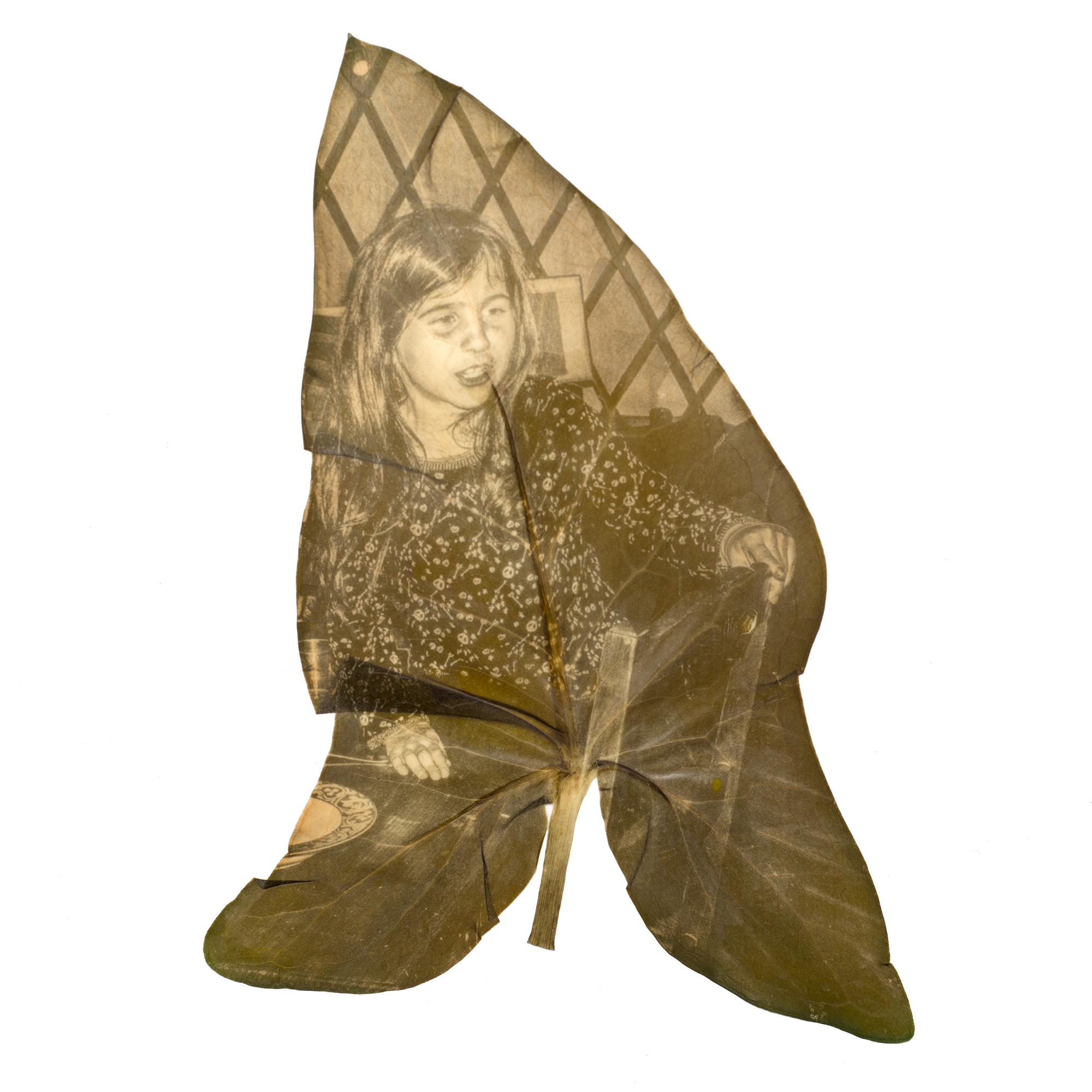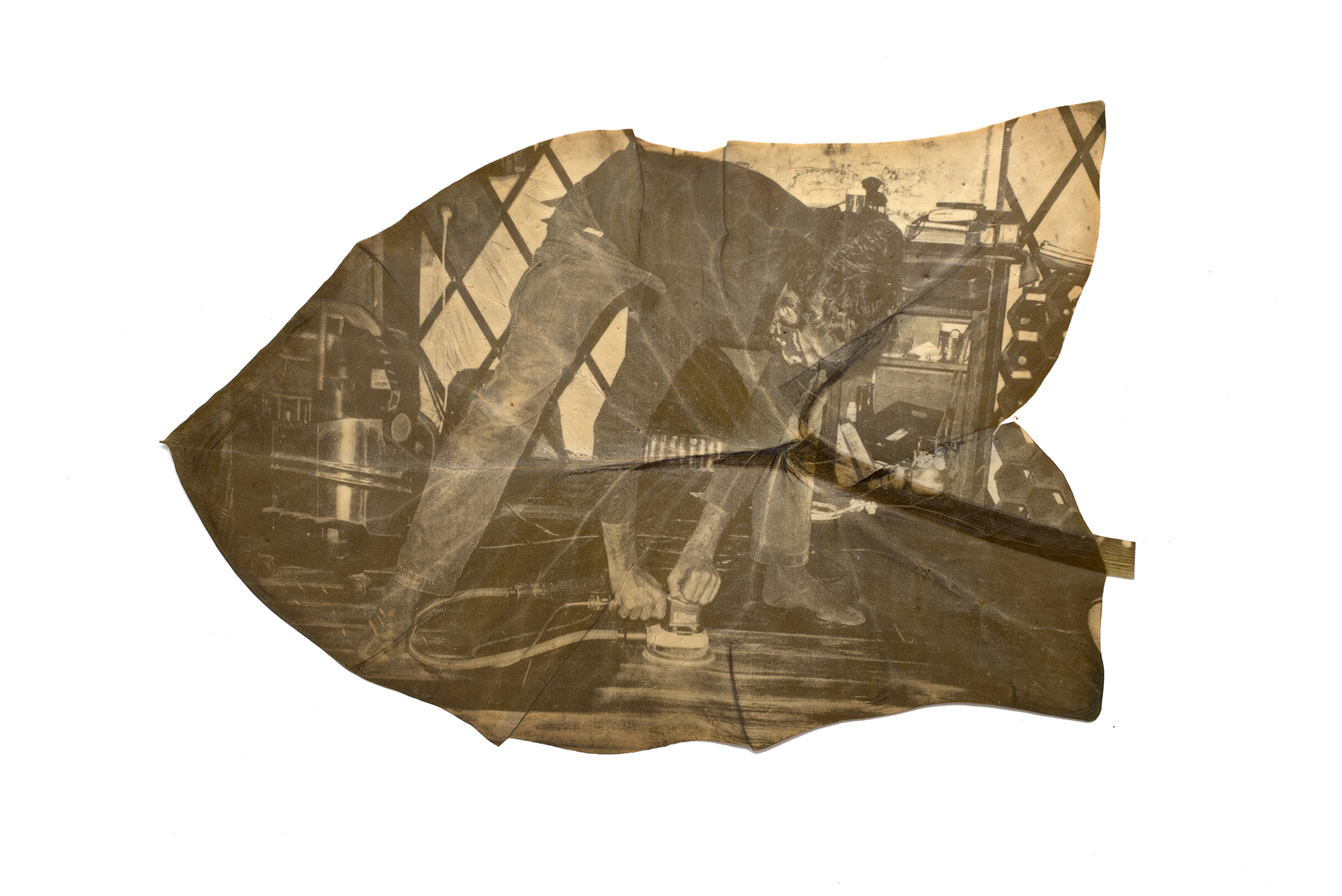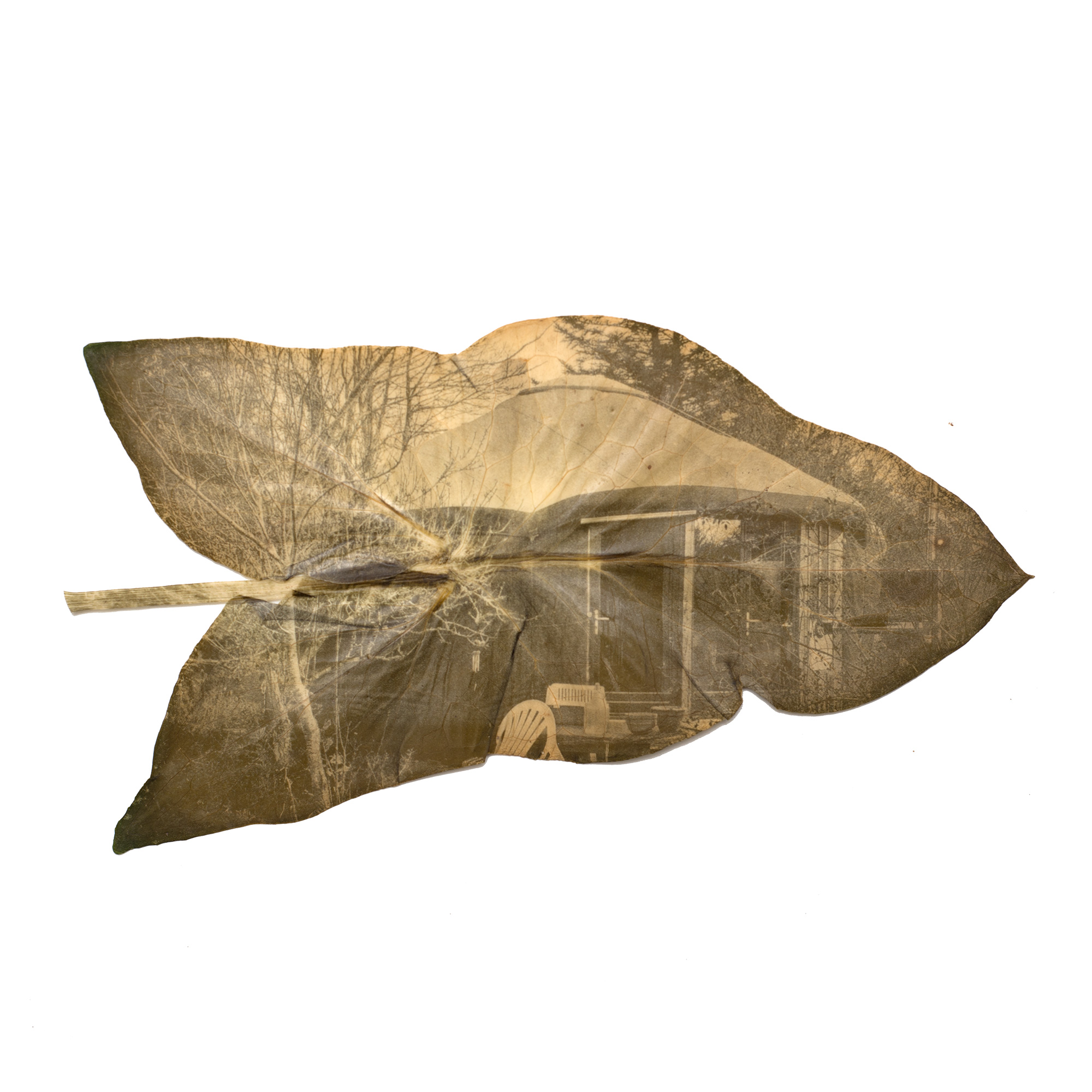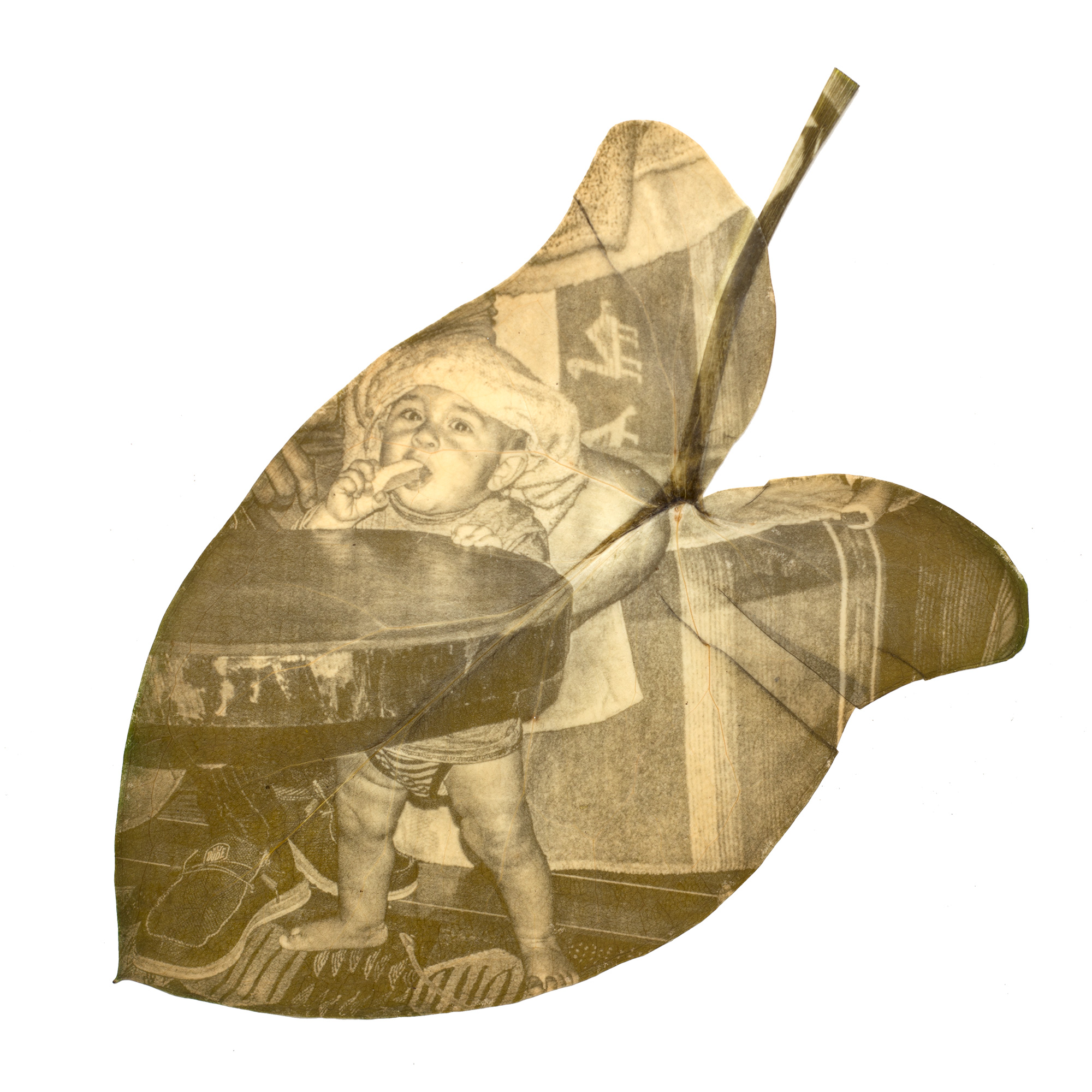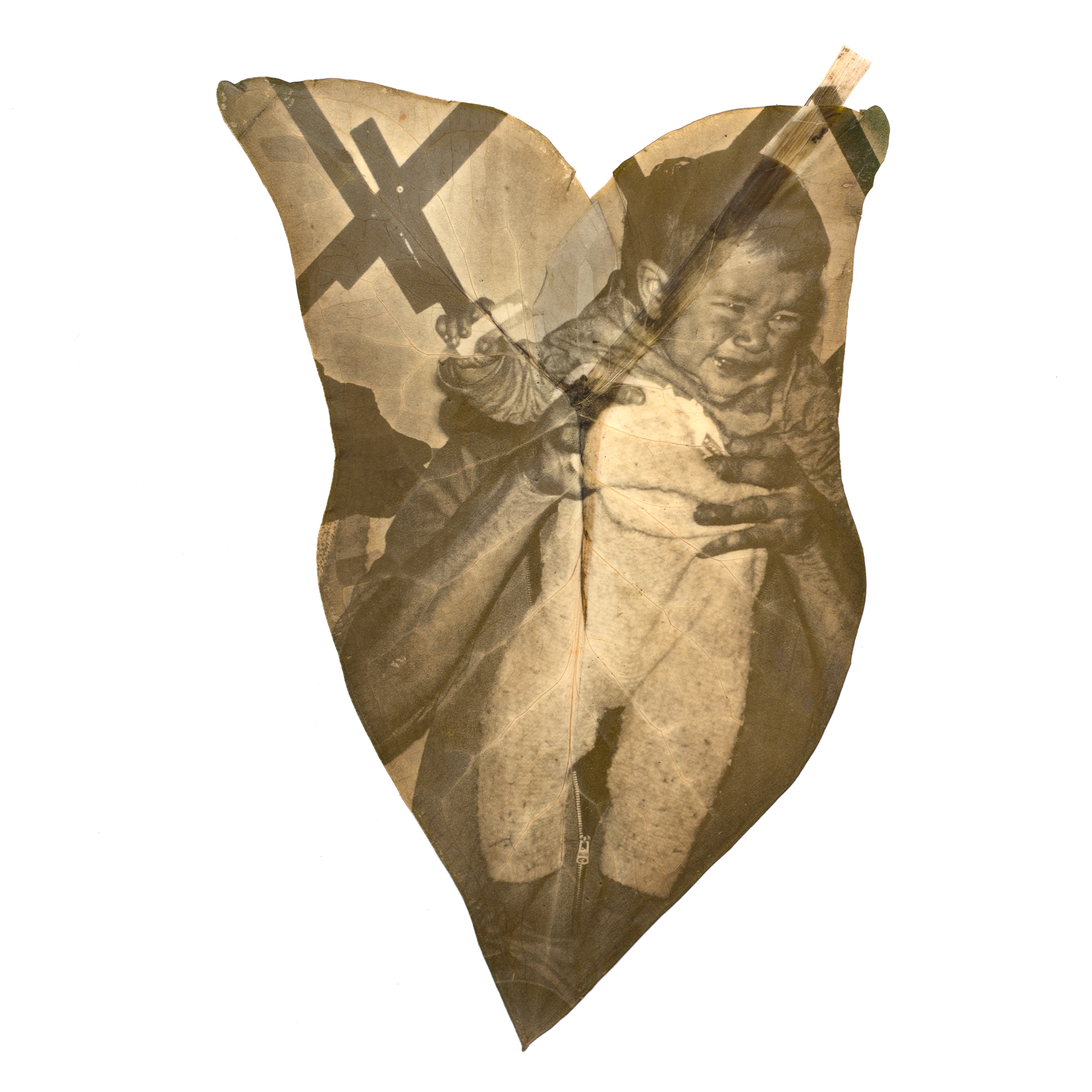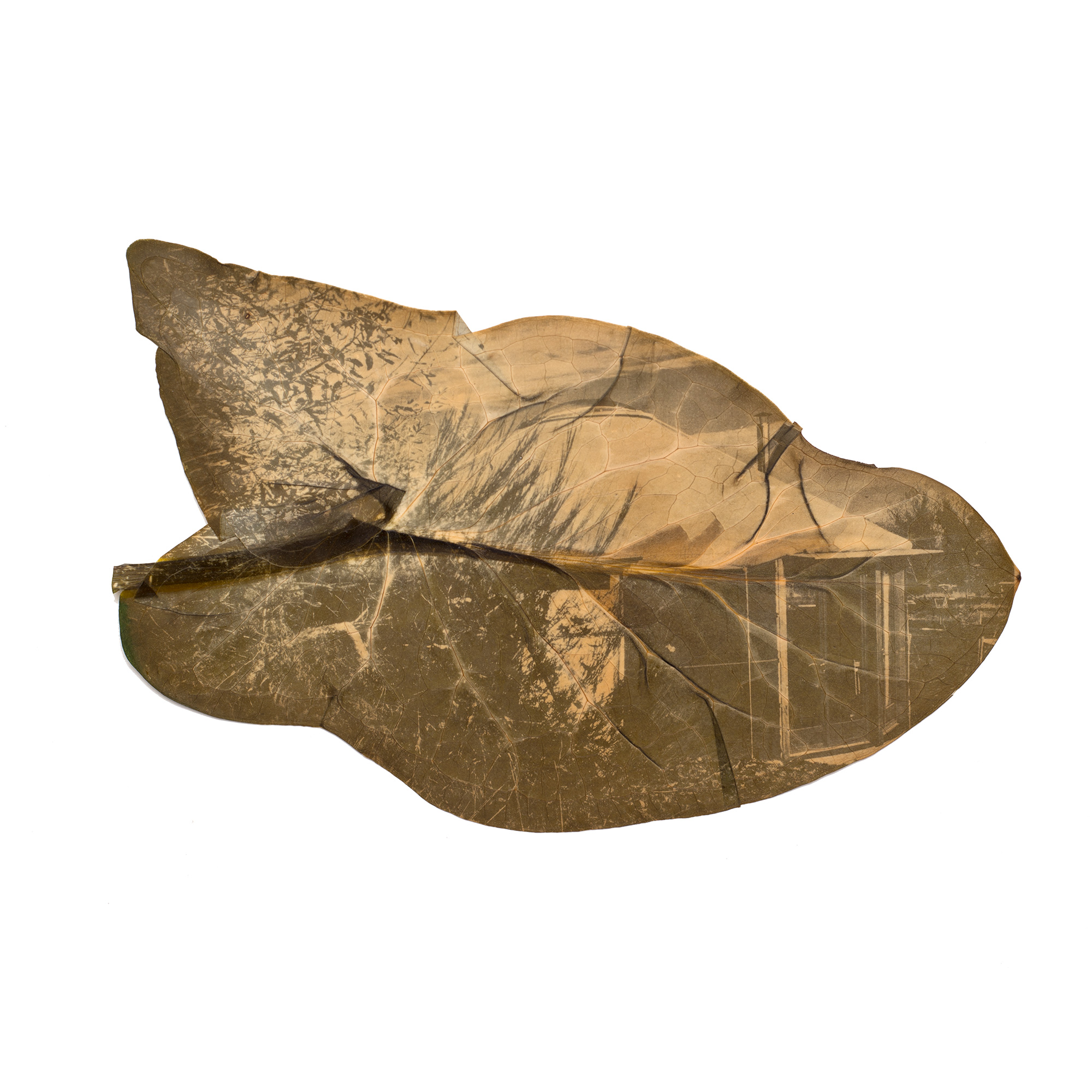11 chlorophyll prints on Arum leaves cast in bioresin, 22x22x1,5cm / 11 impressions végétales sur feuille d’Arum coulées dans de la biorésine, 22x22x1,5cm
Installation views from La Compagnie center for arts, Marseille
« Rather than looking to a fantasised past, the ecotopia is clearly post-industrial », Jean-Paul Deléage
In 1975, Ernest Callenbach published Ecotopia, a bestseller about a journalist’s immersion in a utopian state that had seceded from the United States. While most of the hippy communities that sprang up in the 1970s have now disappeared, a revival is being felt. All over the world, new ecological collectives are springing up, learning from the mistakes of the past. What is an ecotopia? A contraction of « ecological utopia », this catch-all term encompasses all forms of ecological collective organisation that aim to bring about social change, from the most informal to the most institutional, including ecovillages, eco-neighbourhoods, zones to be defended, towns in transition and other non-referenced eco-activities that do not belong to any official network. The experimental nature of these forms means that they are constantly on the move and escape social control, provoking suspicion from neighbours and local administrations, which can only be tamed by diplomacy and education. I travel from ecotopia to ecotopia to meet, photograph and reveal their inhabitants on plants, using light, chlorophyll and photosynthesis. On tree leaves, I depict the daily life of ecotopians, their life as researchers and experimenters active in the social and ecological transition, guided by cooperation and the protection and renaturation of ecosystems. To achieve their goals, ecotopias adopt different strategies depending on the ecological, political, social and cultural specificities of the territories in which they emerge. The aim of this project is to understand how ecotopias are an effective response to climate change. For Ecotopia I, I went to meet the inhabitants of Quilombo Mane Bihan, a hamlet of yurts in Brittany. At the time of slavery in Brazil, « quilombo » referred to the villages and communities formed by slaves fleeing their masters. I revealed portraits of some of the inhabitants and their houses on Arum leaves, a plant that grows in the undergrowth of the quilombo. Commenting on the series, Paul-Emmanuel Odin, director of the creative centre La Compagnie, wrote: « With Quilombo Mane Bihan, Aurélien David documents his stay in an ecovillage in Brittany (…) It is above all the new kinds of living with nature that these ecovillages offer that interest Aurélien David, and it is in their philosophy that he situates his practice. His images are less about nature than about nature in all its unpredictability and creativity ».
« Plutôt que vers un passé fantasmé, l’écotopie se veut clairement post-industrielle », Jean-Paul Deléage
En 1975, Ernest Callenbach publiait Écotopia, un best-seller relatant l’immersion d’un journaliste dans un état utopique ayant fait sécession avec les États-Unis. Si la plupart des communautés hippies nées dans les années soixante-dix ont aujourd’hui disparu, un regain se fait sentir. Partout dans le monde, de nouveaux collectifs écologiques voient le jour, tirant leçon des erreurs du passé. Qu’est-ce qu’une écotopie ? Contraction d’« utopie écologique », ce mot valise englobe toutes les formes d’organisations collectives écologiques qui ont pour ambition la transformation sociale, de la plus informelle à la plus institutionnelle avec, parmi elles, les écovillages, les écoquartiers, les zones à défendre, les villes en transition, et autres écolieux non-référencés, n’appartenant à aucun réseau officiel. Le caractère expérimental de ces formes fait qu’elles sont en mouvement constant et qu’elles échappent au contrôle social, provoquant la méfiance du voisinage et des administrations locales, que seules la diplomatie et à la pédagogie peuvent apprivoiser. Je voyage d’écotopie en écotopie pour rencontrer, photographier et révéler leurs habitants sur des végétaux, grâce à la lumière, la chlorophylle et la photosynthèse. Je dépeins sur des feuilles d’arbres le quotidien des écotopiens, leur vie de chercheurs et d’expérimentateurs actifs dans la transition sociale et écologique, guidés par la coopération, la protection et la renaturation des écosystèmes. Pour parvenir à leurs objectifs, les écotopies adoptent des stratégies différentes selon les spécificités écologiques, politiques, sociales et culturelles des territoires où elles émergent. L’objectif de ce projet est de comprendre en quoi les écotopies constituent une réponse efficace au changement climatique. Pour Écotopia I, je suis allé à la rencontre des habitants du Quilombo Mane Bihan, un hameau de yourtes en Bretagne. À l’époque de l’esclavage au Brésil, “quilombo” désignait les villages et communautés formés par les esclaves fuyant leurs maîtres. J’ai révélé les portraits de quelques habitants et de leurs maisons sur des feuilles d’Arum, une plante qui pousse dans les sous-bois du quilombo. À propos de cette série, Paul-Emmanuel Odin, directeur du centre de création La Compagnie, a écrit : “Avec Quilombo Mane Bihan, Aurélien David documente son séjour dans un écovillage breton (…) Ce sont surtout les nouvelles sortes de vie avec la nature que ces écovillages proposent qui intéressent Aurélien David et c’est dans leur philosophie qu’il inscrit sa pratique. Il fait moins des images sur la nature que des images avec la nature dans ce qu’elle a d’imprévisible, de toujours créateur”.

